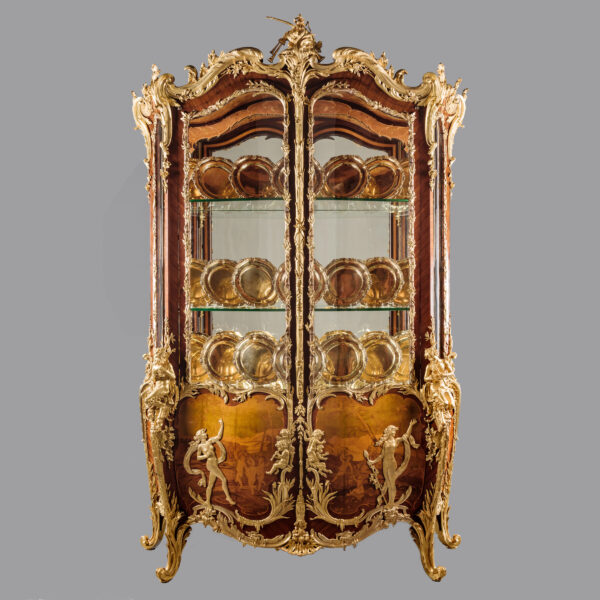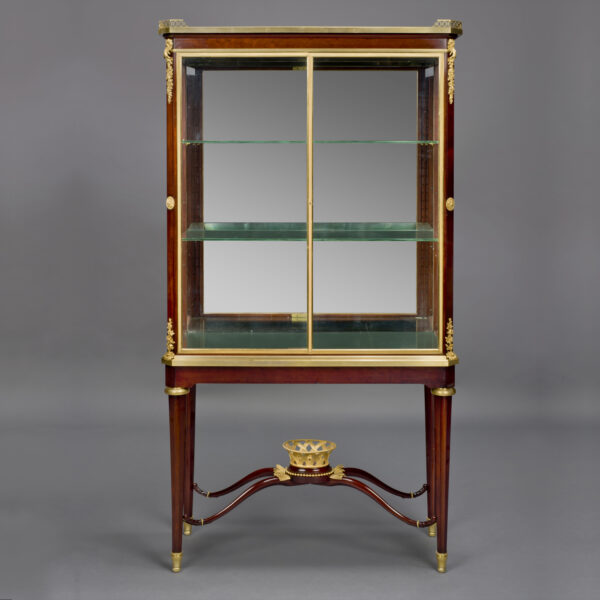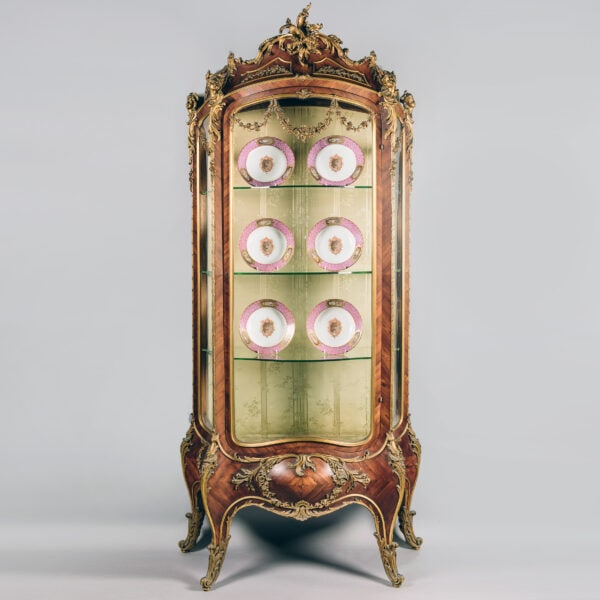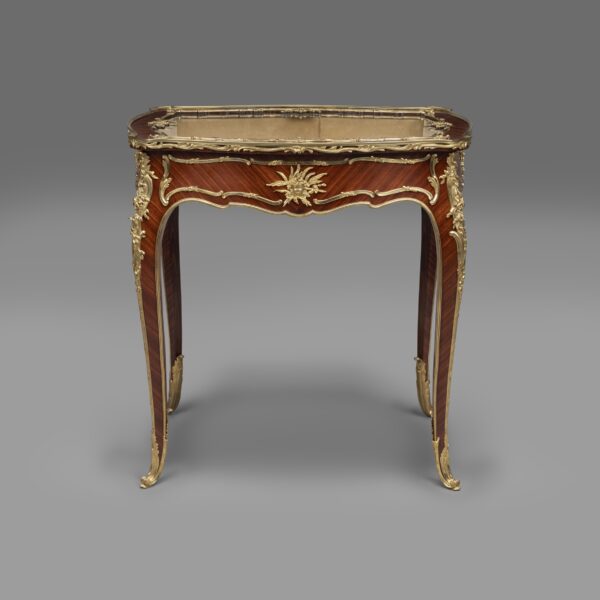François Linke
‘La Grande Bibliothèque’ – A Highly Important Sculptural Vitrine Cabinet For the Paris Exposition Universelle of 1900
POA
'La Grande Bibliothèque' A Highly Important Sculptural Vitrine Cabinet For the Paris Exposition Universelle of 1900 Designed and...
Dimensions
Height: 377 cm (149 in)Width: 325 cm (128 in)
Depth: 84 cm (34 in)
Description
‘La Grande Bibliothèque’
A Highly Important Sculptural Vitrine Cabinet
For the Paris Exposition Universelle of 1900
Designed and made by François Linke & Léon Messagé. Paris, Circa 1900.
The bronze mounts signed ‘F. Linke’ and stamped ‘LINKE’ to the reverse. Linke Index no: 556.
‘La Grande Bibliothèque’
A Highly Important Sculptural Vitrine Cabinet, for the Paris Exposition Universelle of 1900, designed and made by François Linke and Léon Messagé. The oak carcass with veneers of precious timbers. The whole elaborately applied with sculptural gilt-bronze mounts.
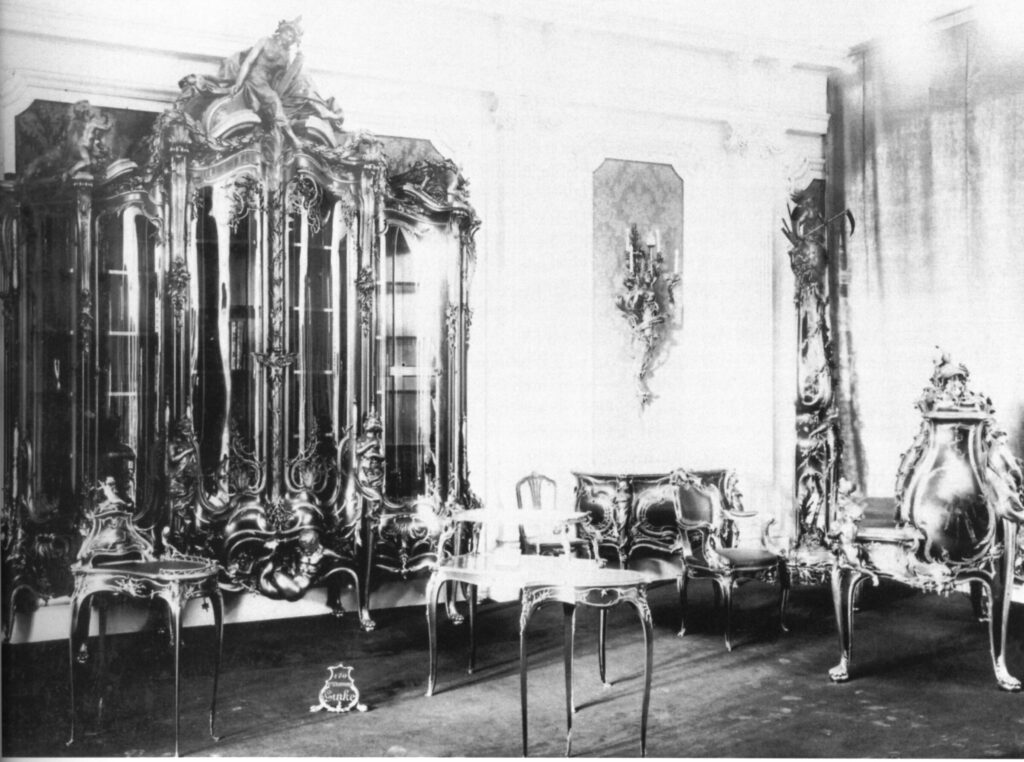
‘La Grande Bibliothèque’ was the centrepiece of François Linke’s gold medal winning stand at the 1900 Paris Exhibition (courtesy Christopher Payne / Linke Archive)
Breathtaking in both scale and conception, this exceptional vitrine cabinet is the chef d’oeuvre of its maker, François Linke (1855-1946). First unveiled at the Paris 1900 Exposition Universelle it embodies the artistic aspirations of the Belle Epoque and the Gilded Age. A definitive example of ‘art furniture’, its extraordinary design is made possible only by phenomenal technical accomplishment in the art of furniture making. Standing at nearly four metres (over twelve feet) high with exceptional three-dimensional gilt-bronze figures, it is as much an exercise in sculpture, as in cabinet making.
Designed with the sculptor Léon Messagé, the whole is adorned with gilt-bronze sculptural figures and rococo inspired ornament. The cornice is centred by a figure of Minerva, holding a tablet bearing the motto ‘De Omni Re Scibili et Quis Busdam Aliis’, (Of all things that can be known and all other things), a fitting enlightenment call to take interest in every aspect of knowledge, be it art or science. Continuing this theme, the figure is flanked by remarkably animated allegories of Geography and Architecture while two enormous espagnolettes representing Art and Literature, frame the central doors, one with an artist’s palette, the other composing poetry. At the base of the central section, the figure of Triton, ‘le Monst l’ignorance’ (the monster of ignorance) as Linke described it, is depicted in Greek form, with two tails. This expressive figure lies beneath a naturalistic tree of life, its trunk extending between the central doors and rising to the progressive heights of the cresting.
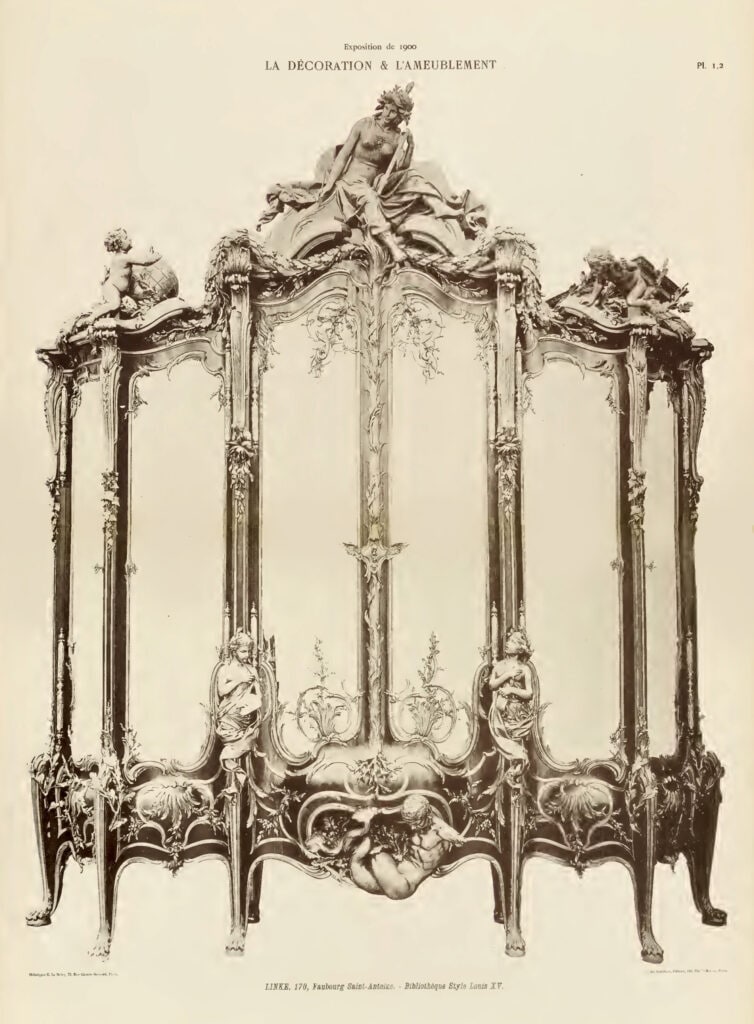
‘La Grande Bibliothèque’ illustrated in ‘L’Ameublement à l Exposition de 1900’ and described as: Bibliotheque à 6 portes en bois de violette el de satiné. Les bronzes sont ciselés et dorés au mercure. Le fronton représente Minerve écrivant 1’Histoire; — sur les côtés , des enfants représentant l’Archéologie et la Géographie; — en bas est une voussure où est representé un monstre se débattant, figurant l’Ignorance; — les pieds du milieu représented des figures de femmes: la Musique et la Peinture. Cette Bibliotheque mesure 3m20 de long sur 3m 80 de haut. Prix. . . . 250,000 fr.
‘La Grande Bibliothèque’ dominated Linke’s 1900 exhibition stand and enthralled members of the public and the jury alike. Determined to outshine the competition at the exhibition Linke had set about creating the most ambitious pieces he could envisage, more extravagant than had ever been displayed before. The items he exhibited marked a transition from the historicist interpretation of Louis XV and Louis XVI styles, an interpretation that was the main-stay of his nearest rivals, to something startlingly new and vital in its immediacy.
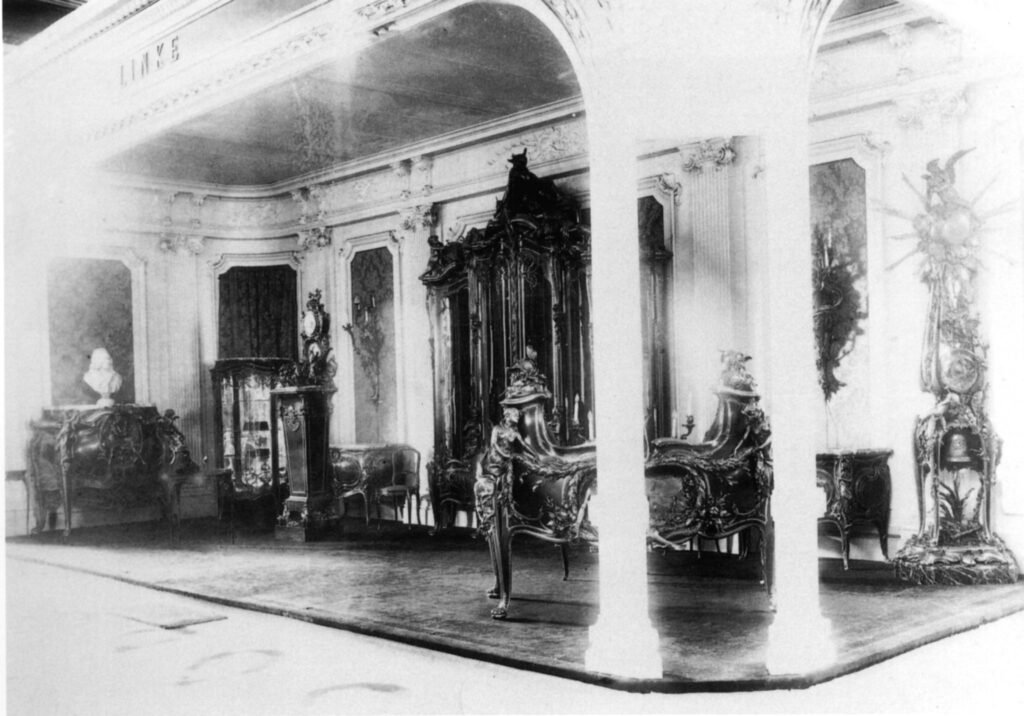
‘Another view of François Linke’s gold medal winning stand at the 1900 Paris Exhibition (courtesy Christopher Payne / Linke Archive)
Linke’s stand would have appeared refreshingly new to contemporary onlookers, the traditional designs of the Eighteenth Century melting seamlessly into an exuberant naturalism. The ‘Revue’ described Linke’s style as ‘entièrement nouveaux’ and noted ‘This opinion is universally accepted. Linke’s stand is the biggest show in the history of art furniture in the year 1900’ (Revue Artistique & Industrielle, July-August 1900).
Charles Dambreuse describes how the La Grande Bibliothèque was viewed at the 1900 exhibition:
‘First let us talk about the big one, the already famous bookcase; let’s talk about it since everyone is talking about it and everyone wants to have seen it, and it is the highlight of this exhibition’.
Charles Dambreuse, ‘L.Art Industriel à l’Exposition de Meuble de Style – M.F. Linke’, Reveu Artistique & Industreille, Paris, July August 1900. p. 239.
Linke, together with Léon Messagé, developed a new style for the 1900 Exhibition that paid homage to the Louis XV rococo in the fluidity of its approach, but an approach fused with the lively flowing lines of the contemporary and progressive ‘art nouveau’.
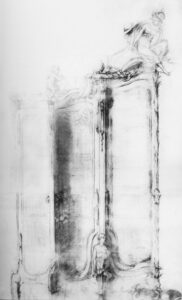
‘The original full-scale charcoal drawing for the Grande Bibliothèque by Léon Messagé (courtesy Christopher Payne / Linke Archive)
The Art Journal reported in 1900 on Linke’s stand:
“The work of M. Linke … was an example of what can be done by seeking inspiration amongst the classic examples of Louis XV and XVI without in any great sense copying these great works. M. Linke’s work was original in the true sense of the word, and as such commended itself to the intelligent seeker after the really artistic things of the Exhibition. Wonderful talent was employed in producing the magnificent pieces of furniture displayed….” (‘The Paris Exhibition’, Art Journal 1900, pp. 340-341).
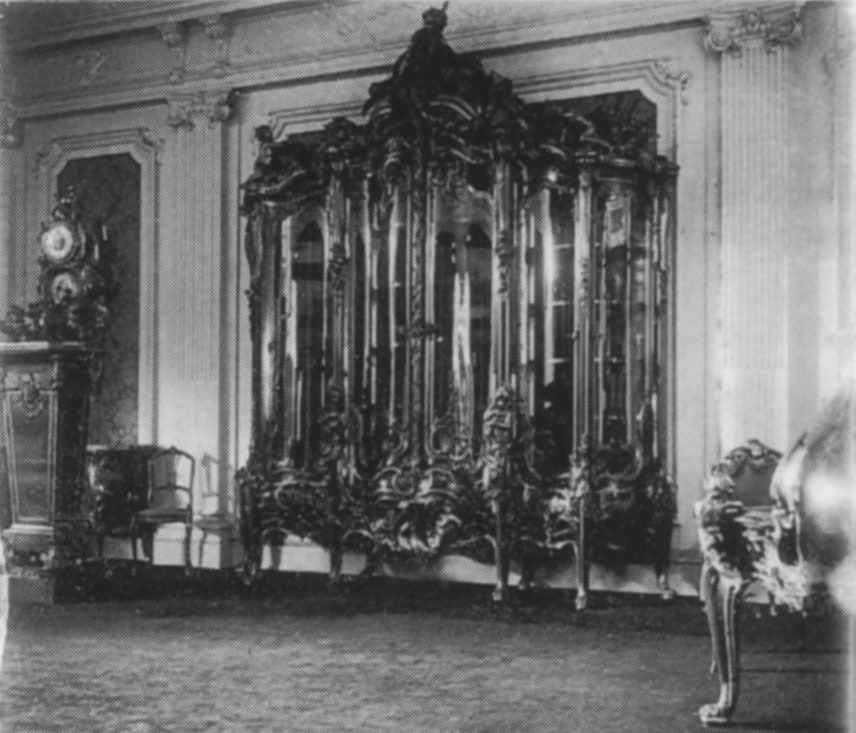
‘La Grande Bibliothèque’ on François Linke’s stand at the 1900 Paris Exhibition (courtesy Christopher Payne / Linke Archive)
The formation of Linke’s distinctive style was made possible by his collaboration with Léon Messagé. The furniture Messagé designed for Linke’s 1900 exhibition stand, with its exuberant allegorical figures cast in high relief recalling the sensual paintings of François Boucher and Jean-Honoré Fragonard, exemplified his ability to seamlessly merge the different media of wood carving, bronze and marquetry into a dynamic unified whole.
After initial sketches, Messagé would produce a three-dimensional wax maquette, which would then be interpreted into a full-scale wooden model by Linke’s craftsmen. At this stage the costly mounts would be modelled in wax and once approved made up to be cast in bronze. Messagé’s original sketches for ‘La Grande Bibliothèque’ survive in the Linke Archive along with the scale wax model standing almost 74 cm (30 inches) high. A sculptural tour de force, Messagé spent 558 hours on the bronzes. His team of modellers consisting of of M. Guillot, M. Dubois and M. Surbled, spent an additional 3,150 hours on modelling. (op. cit. C. Payne, François Linke, p.138-139).
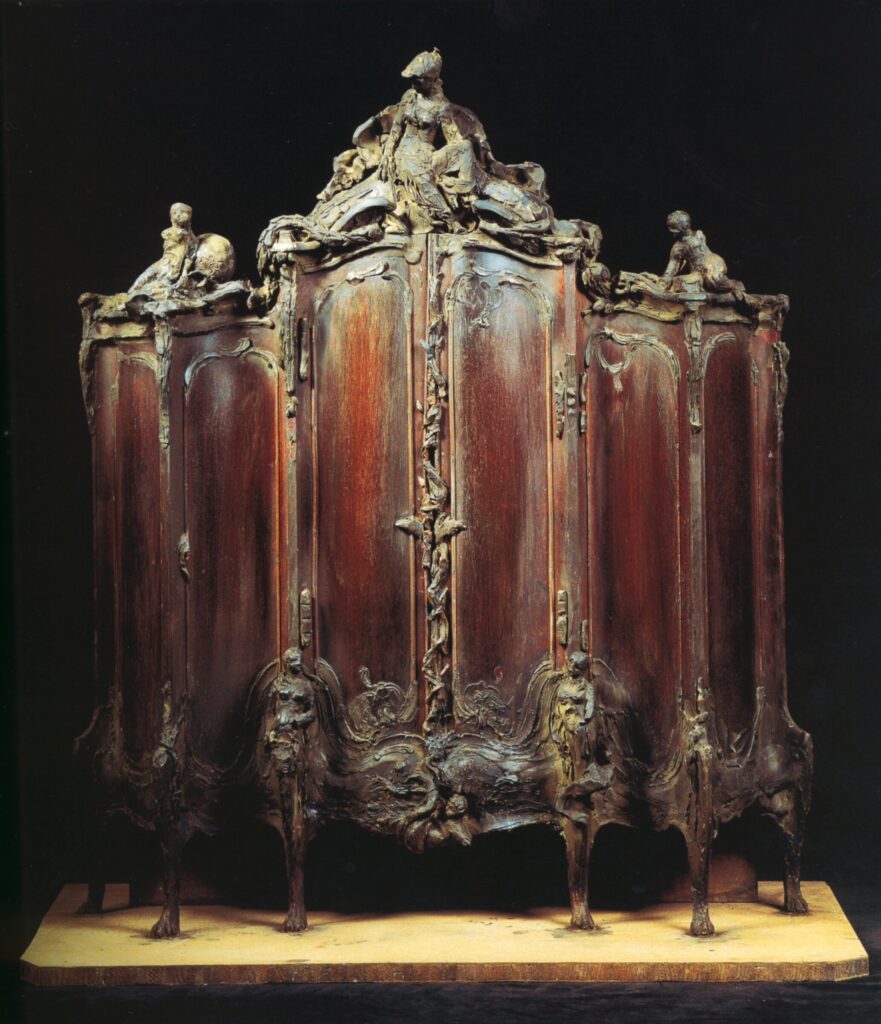
The wax maquette for ‘La Grande Bibliothèque’ (courtesy Christopher Payne / Linke Archive)
EXPOSITION UNIVERSELLE PARIS 1900
The International Exhibition which took place in Paris in 1900 can be considered one of the greatest ever mounted. President Loubert’s words on the opening day, 14th April 1900, must have sounded a note of optimism to all the exhibitors,
“Let this exhibition be an exhibition of harmony, of peace and of progress and if some of the decoration maybe ephemeral, let not its substance be in vain”.
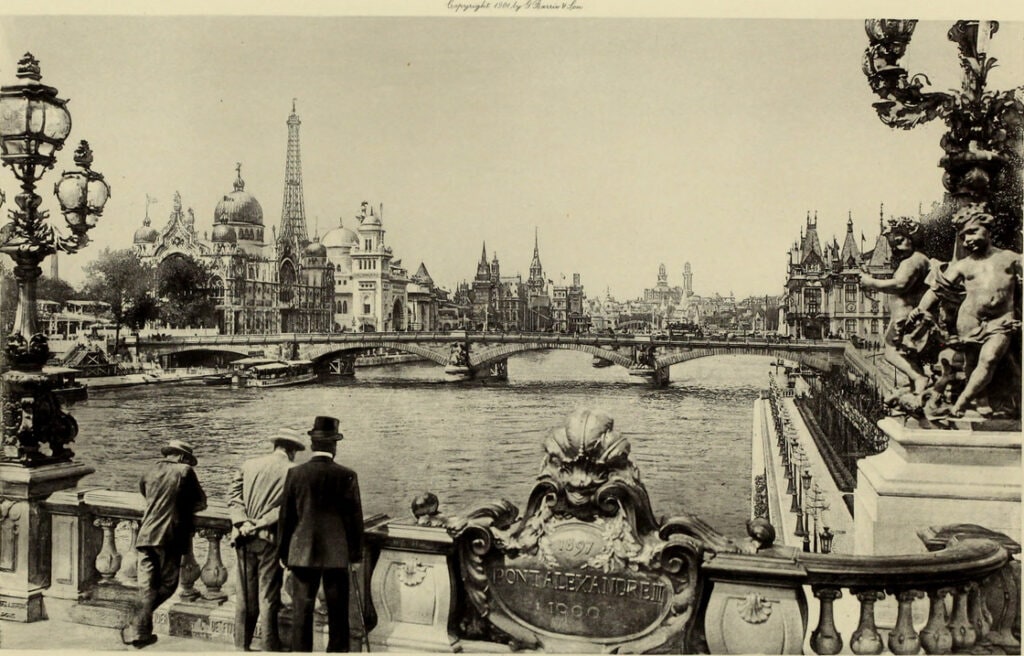
The left bank of the Seine viewed from the Pont Alexandre III, completely redeveloped with the pavilions of many nations built in an extraordinary array of architectural styles for the 1900 exhibition
Paris was transformed, national pavilions lined the Seine, the Grand Palais and the Petit Palais, both in use today, were constructed. The city was bathed in electric illuminations by night and thronged with people by day. 50,860,801 people are recorded to have visited the exhibition. By comparison, the population of France at the time was 41 million.
Linke’s stand was one of the most impressive, standing between the displays of the glass and furniture maker Gallé of Nancy and Schmit of Paris.
In Chefs-d’oeuvre of Applied Art at the Exposition Universelle 1900, Victor Champier provides a summary of the objectives of the exhibition and the artistic aspirations of the age.
“The formula of modern art and of the modern style must, in each one of us, emanate solely from a sense of the dignity, stability, and comfort of modern life. Upon that basis, the logic of our needs will give birth, unsuspected by us, to that modern style which will hereafter most adequately characterize our epoch.” (V. Champier, Exposition Universelle, 1900: The Chefs-d’oeuvre Applied Art, Paris, Vol. 9, p.110).
Illustrated below this concluding epitaph is a colour photograph of the key for La Grande Bibliothèque. The key is a fitting choice, as few other works of art better or more completely, characterise the ambitions of the age. La Grande Bibliothèque, in its scale, style, perfection of construction and sheer ambition, is a definitive work of art of the Belle Epoque.
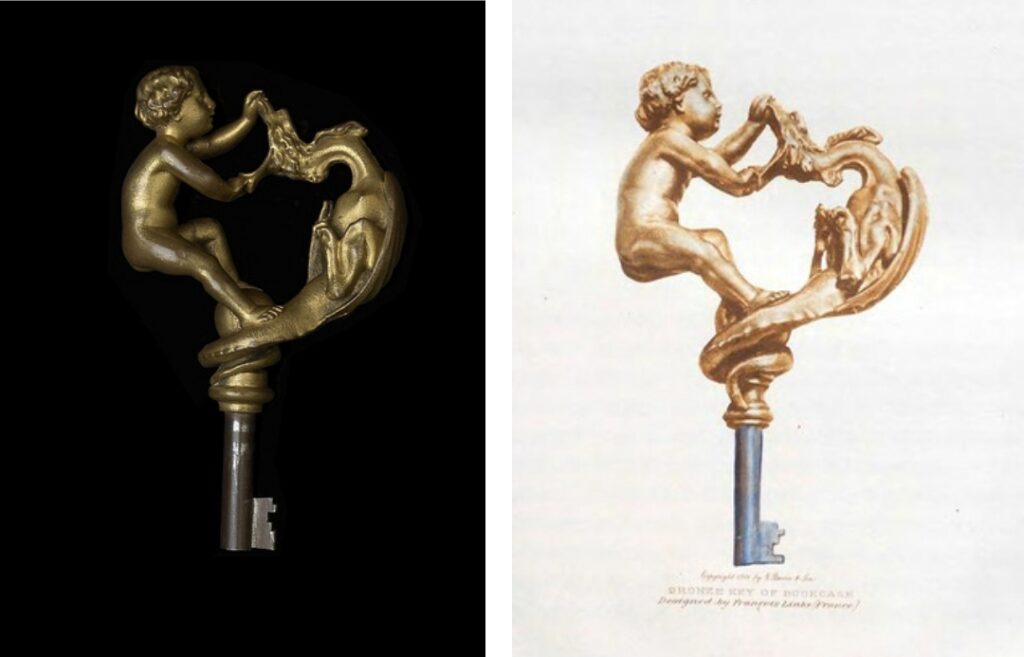
The unique key for ‘La Grande Bibliothèque’. The bow is formed of a putti wresting open the jaws of a sea monster. The design was created for and only used on the bibliotheque. The key illustrated in V. Champier, Exposition Universelle, 1900: The Chefs-d’oeuvre Applied Art, Paris, Vol. 9, p.110.
François Linke (1855 – 1946) was the most important Parisian cabinet maker of the late nineteenth and early twentieth centuries, and possibly the most sought after cabinet maker of his period.
He was born in 1855 in the small village of Pankraz, in what is now the Czech Republic. Records show that Linke served an apprenticeship with the master cabinetmaker Neumann, then in 1875 at the age of 20 he arrived in Paris where he lived until he died in 1946.
It is known that the fledgling Linke workshops were active in Paris in the Faubourg St. Antoine as early as 1881, and during this time he supplied furniture for other more established makers such as Jansen and Krieger.
The quality of Linke’s craftsmanship was unsurpassed by any of his contemporaries and reached its peak with his spectacular stand at the Paris Exposition Universelle in 1900, where his Grand Bureau took the gold medal. He gambled his fortune and reputation on this stand, exhibiting several breathtaking items of furniture with sculptural mounts of the most exceptional quality and proportion. His gamble worked and his reputation was established to such an extent that Linke continued to be the pre-eminent furniture house in Paris until the Second World War.
As the Art Journal reported in 1900 on Linke’s stand:
‘The work of M. Linke … was an example of what can be done by seeking inspiration amongst the classic examples of Louis XV and XVI without in any great sense copying these great works. M. Linke’s work was original in the true sense of the word, and as such commended itself to the intelligent seeker after the really artistic things of the Exhibition. Wonderful talent was employed in producing the magnificent pieces of furniture displayed….’
The formation of Linke’s distinctive style was made possible by his collaboration with the sculptor Léon Messagé. Together Linke and Messagé designed furniture for Linke’s 1900 exhibition stand, with exuberant allegorical figures cast in high relief, that exemplified Linke’s ability to seamlessly merge the different mediums of wood carving, bronze and marquetry into a dynamic unified whole.
Today Linke is best known for the exceptionally high quality of his work, as well as his individualism and inventiveness. All of his work has the finest, most lavish mounts, very often applied to comparatively simple carcasses. The technical brilliance of his work and the artistic change that it represented were never to be repeated.
Bibliography:
Payne, Christopher. François Linke, (1855 – 1946), The Belle Époque of French Furniture, Antique Collectors’ Club, (Woodbridge, UK), 2003.
Meyer, Jonathan. Great Exhibitions – London, New York, Paris, Philadelphia, 1851-1900, Antique Collectors’ Club, (Woodbridge, UK), 2006; pp. 298 – 300.
Ledoux – Lebard, Denise. Les Ébénistes du XIXe siècle, Les Editions de l’Amateur, (Paris), 1984; pp. 439-43.
Revue Artistique & Industrielle, (Paris), July-August 1900.
Coral Thomsen, D. (ed), The Paris Exhibition 1900, The Art Journal, 1901; p.341.
Christopher Payne notes with reference to the records left by François Linke that only three examples of La Grande Bibliothèque were made:
1) The first was made for the 1900 Exposition Universelle and sold to Solomon Barnato “Solly” Joel (1865 –1931), a London based financier who made is fortune in the diamond mines of South Africa.
2) The second was made in 1904 and sold in 1905 to Joseph Raphael De Lamar (1843 – 1918), a Dutchman by birth who became a prominent mine owner and financier in the United States and Canada.
3) The third was made in 1909 and sold in 1912 to Antonio Devoto (1833 – 1916), an Italian émigré to Argentina who became one of the richest men in South America.
The present Grande Bibliothèque is one of two examples to have survived, the other is in a private collection. The third was tragically broken up and only parts of it are known to have survived.
La Décoration et l’ameublement à l’Exposition de 1900, v. 1, by Armand Guèrinet, Paris, 1900, page p. 8, pl. 1
The Art Journal, ‘The Paris Exhibition’, London, Part 1. May 1900, pp. 340-341.
Charles Dambreuse, ‘L.Art Industriel à l’Exposition de Meuble de Style – M.F. Linke’, Reveu Artistique & Industreille, Paris, July August 1900. p. 237-248.
Rapport du Jury International. Exposition universelle international de 1900 à Paris, Paris, 1902 Group XII, Classe 69, p.32.
Exposition internationale universelle de 1900. Catalogue général official, Tome quatorzième. Groupe XII. Décoration et mobilier des édifices publics et des habitations. Classe 69. Meubles à bon marché et meubles de luxe: Paris, Lemercier, 1900. p. 12: No. 58 Linke (François), à Paris, rue du Faubourg-SaintAntoine, 170. – Grande bibliothèque, Grand bureau. Fauteuil de bureau. Deux commodes. Deux bras de lumière. Un régulateur. Un grand bahut. Petits meubles. Fabricant de meubles et bronzes. PL. 1. – C.4.
Christopher Payne, François Linke 1855-1946, The Belle Époque of French
Furniture, Antique Collector’s Club, 2003. pp. 120-123, 138-140
Denise Ledoux-Lebard, Le Mobilier Français du XIXe Siècle, Paris, 2010, p. 435-444.
Camille Mestdagh, L’Ameublement d’art Français 1850-1900, Les Editions de l’Amateur, Paris, 2010 p.189-199.
ChristopherPayne, Paris Furniture: The Luxury Market of the 19th Century, Editions Monelle Hayot (Saint-Remy-en-l’Eau), 2018; pp. 442-443.
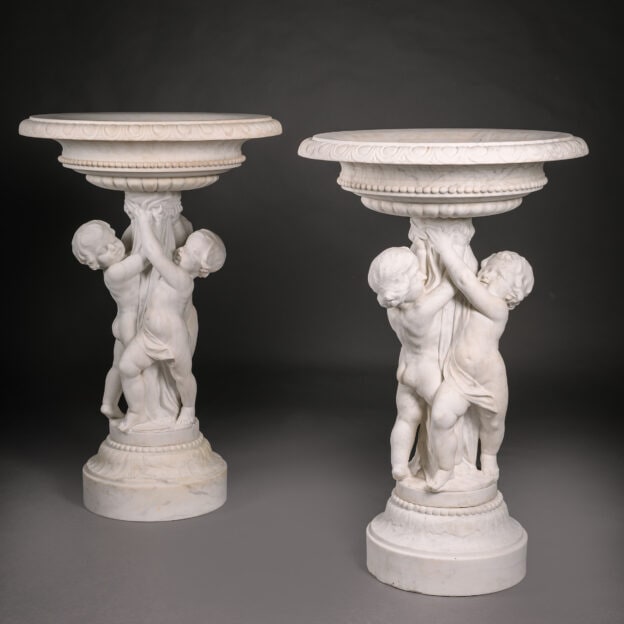




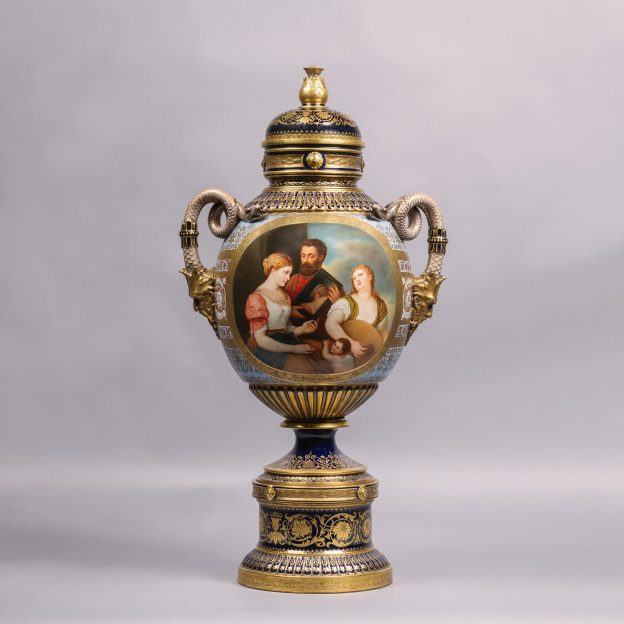
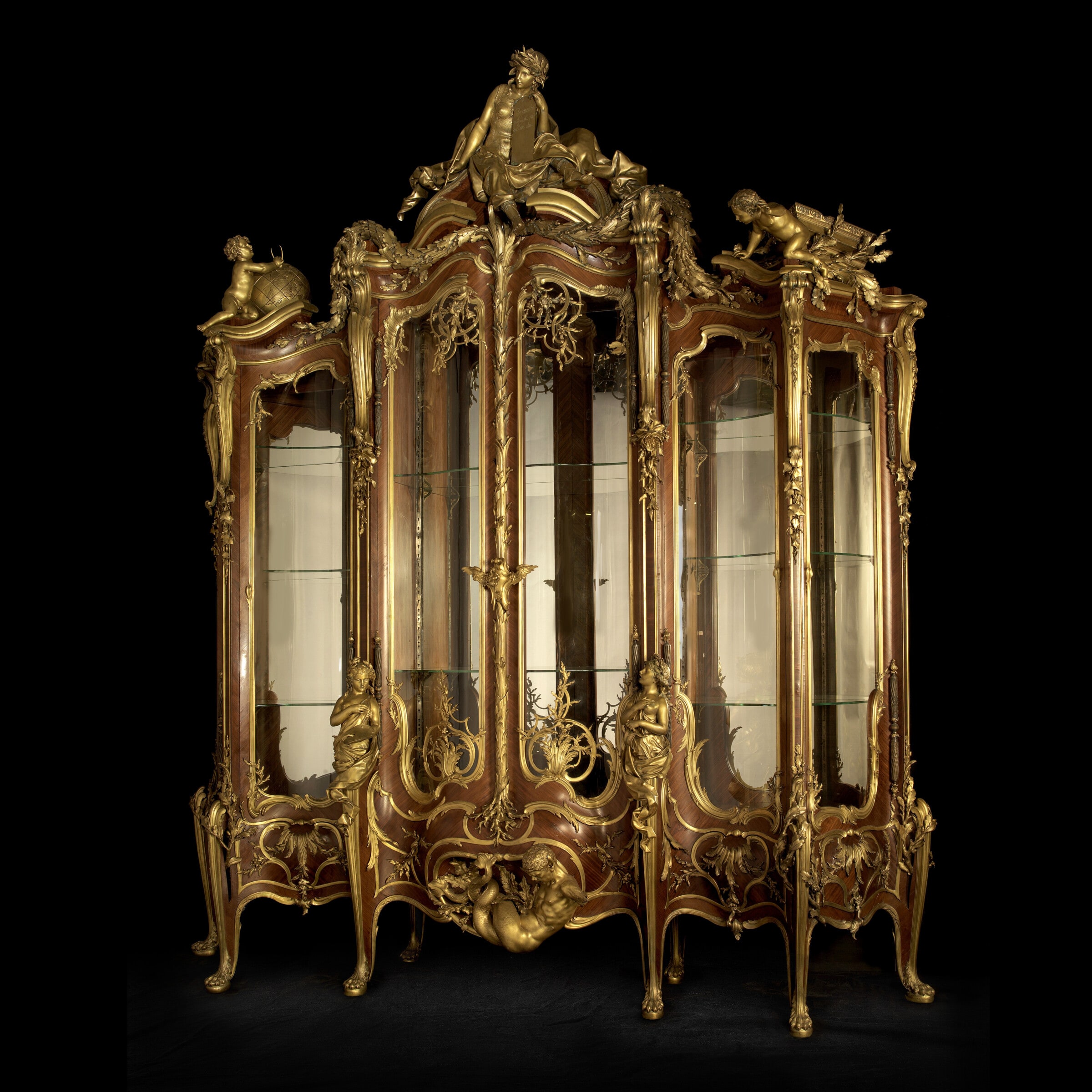

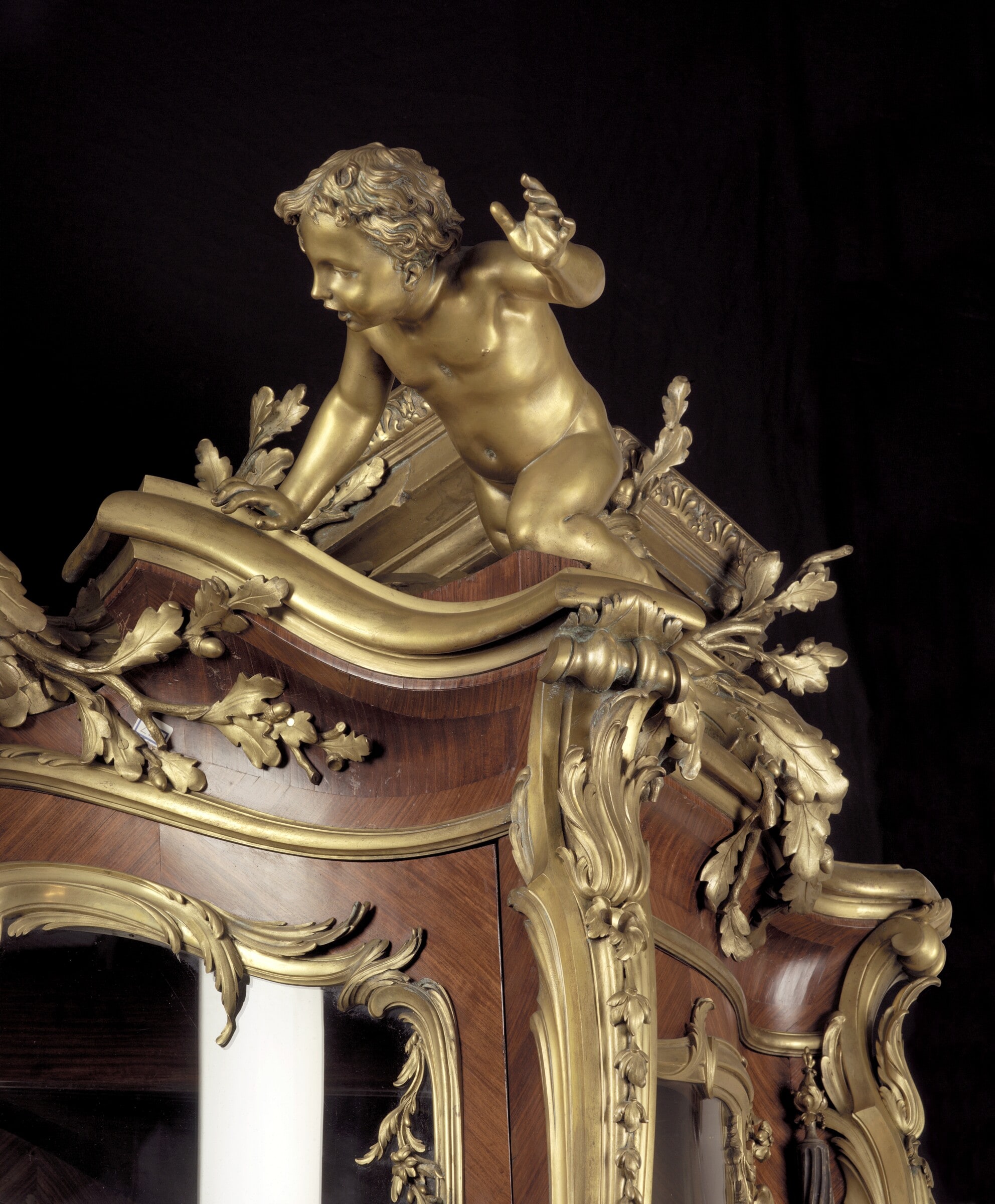

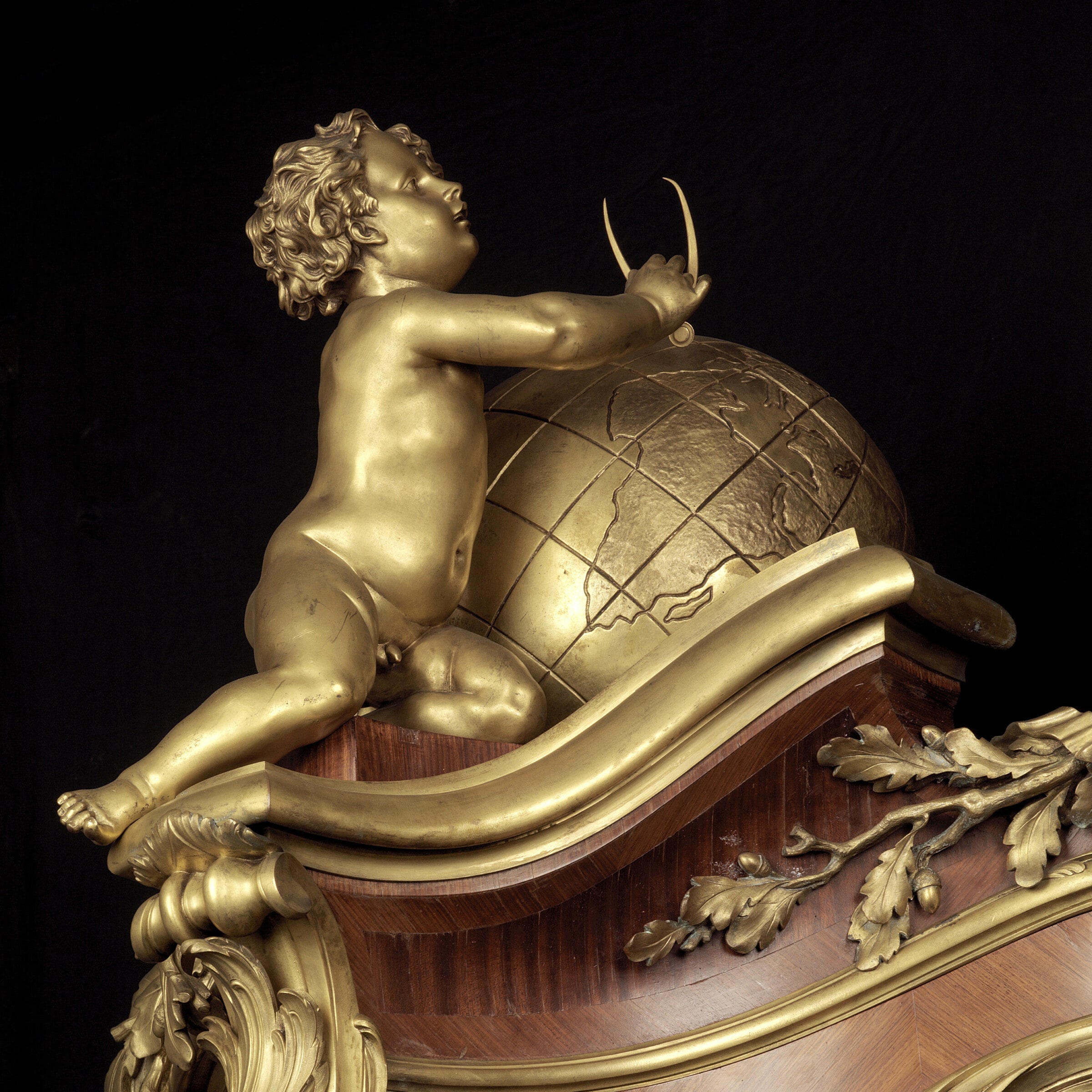
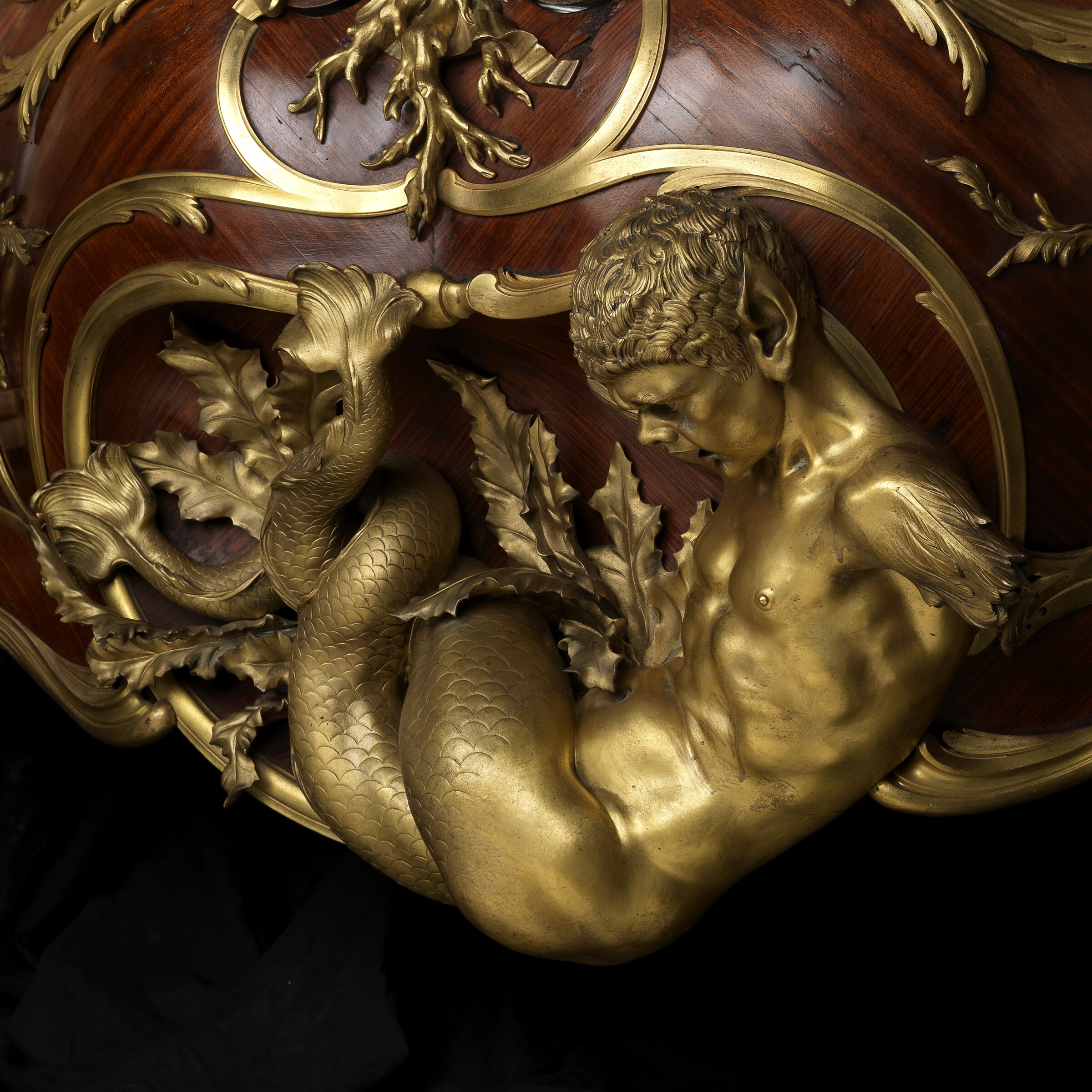
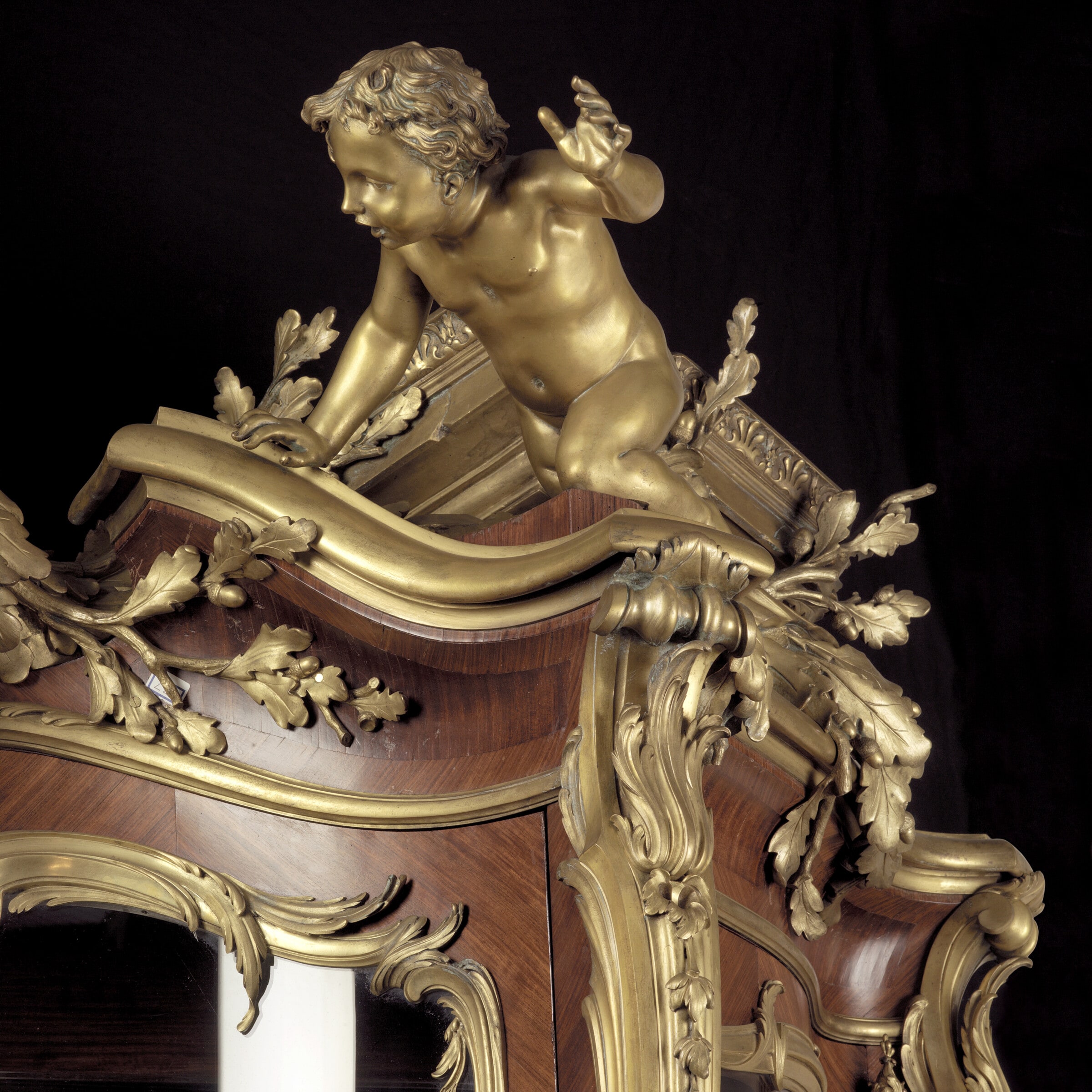
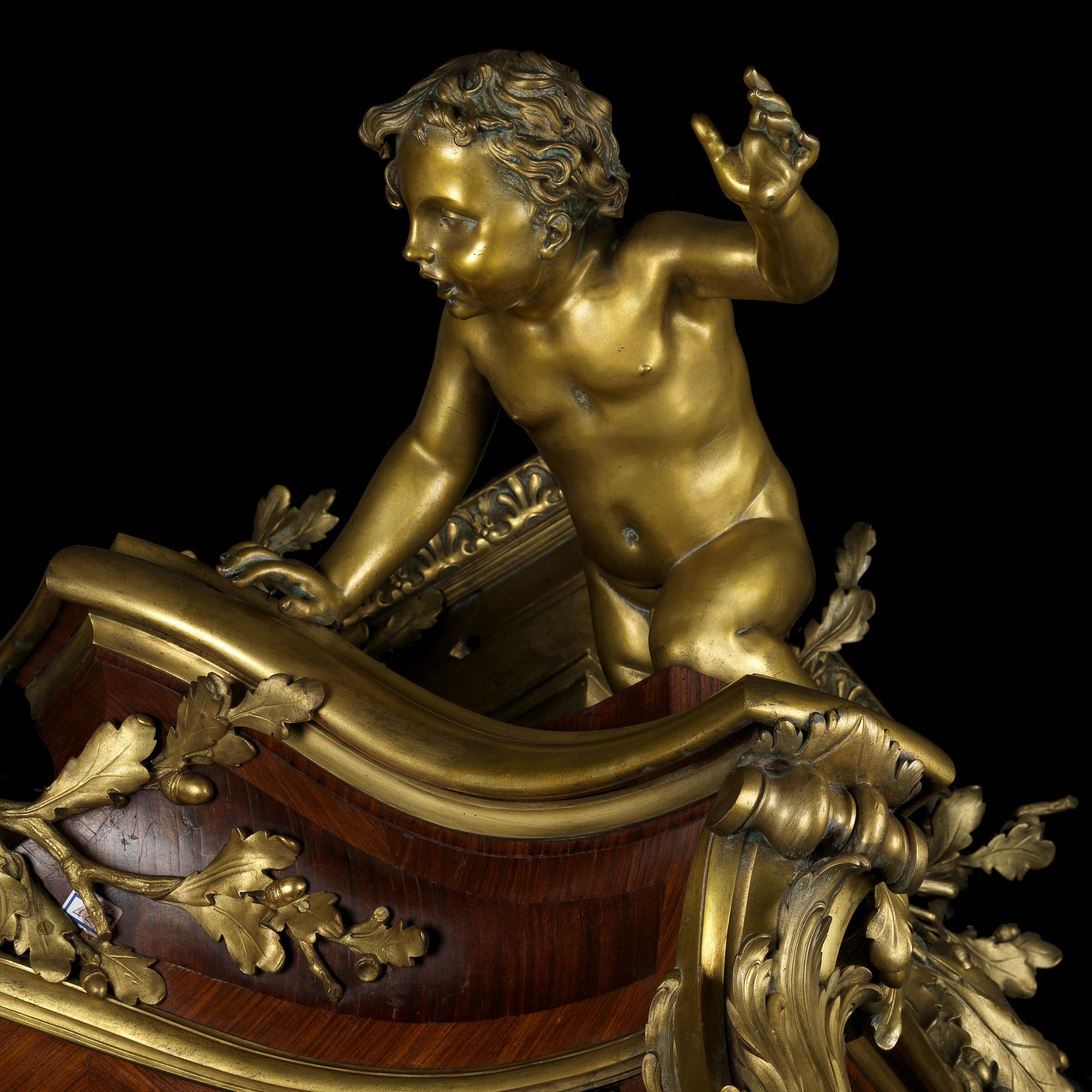
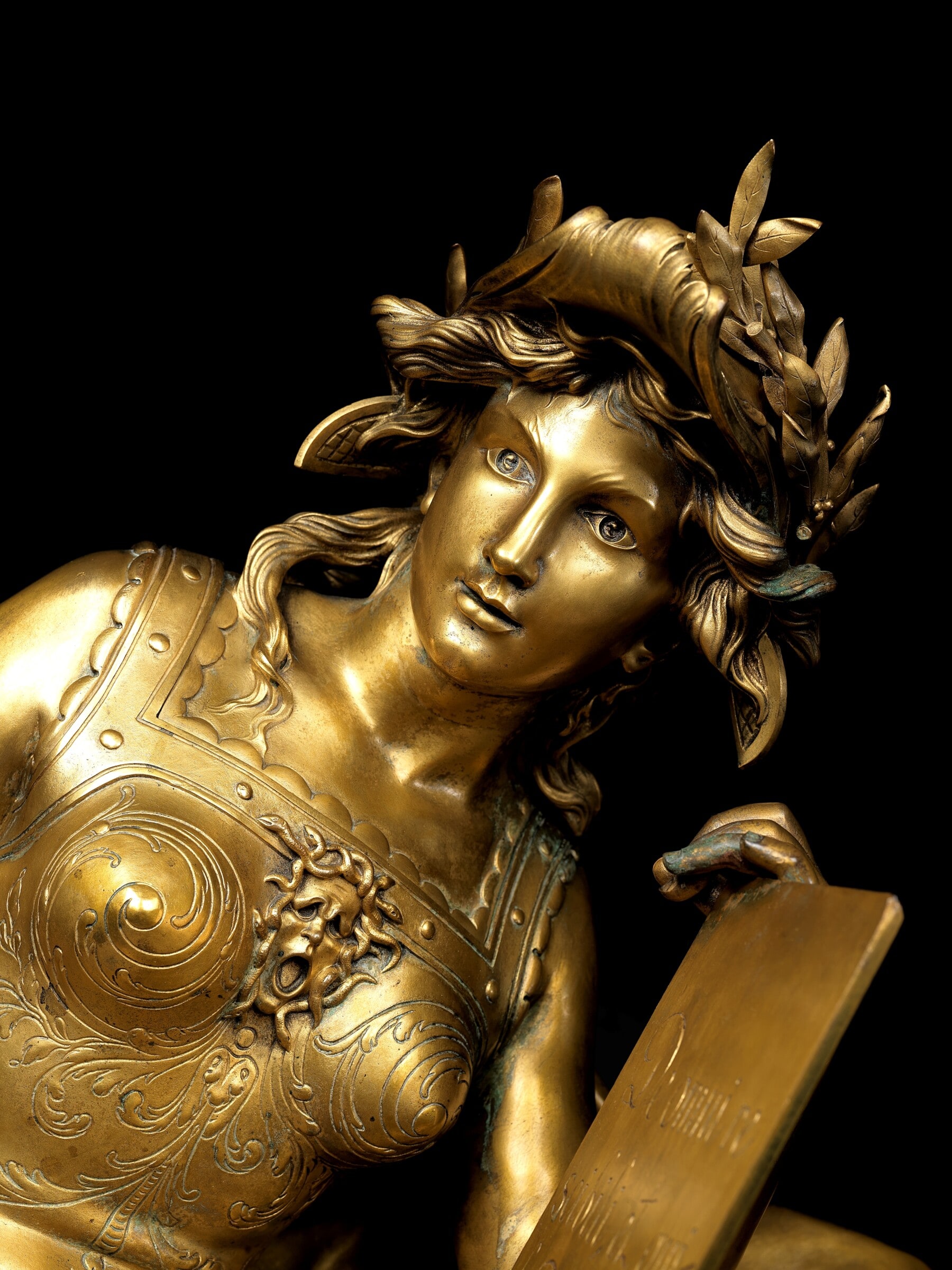
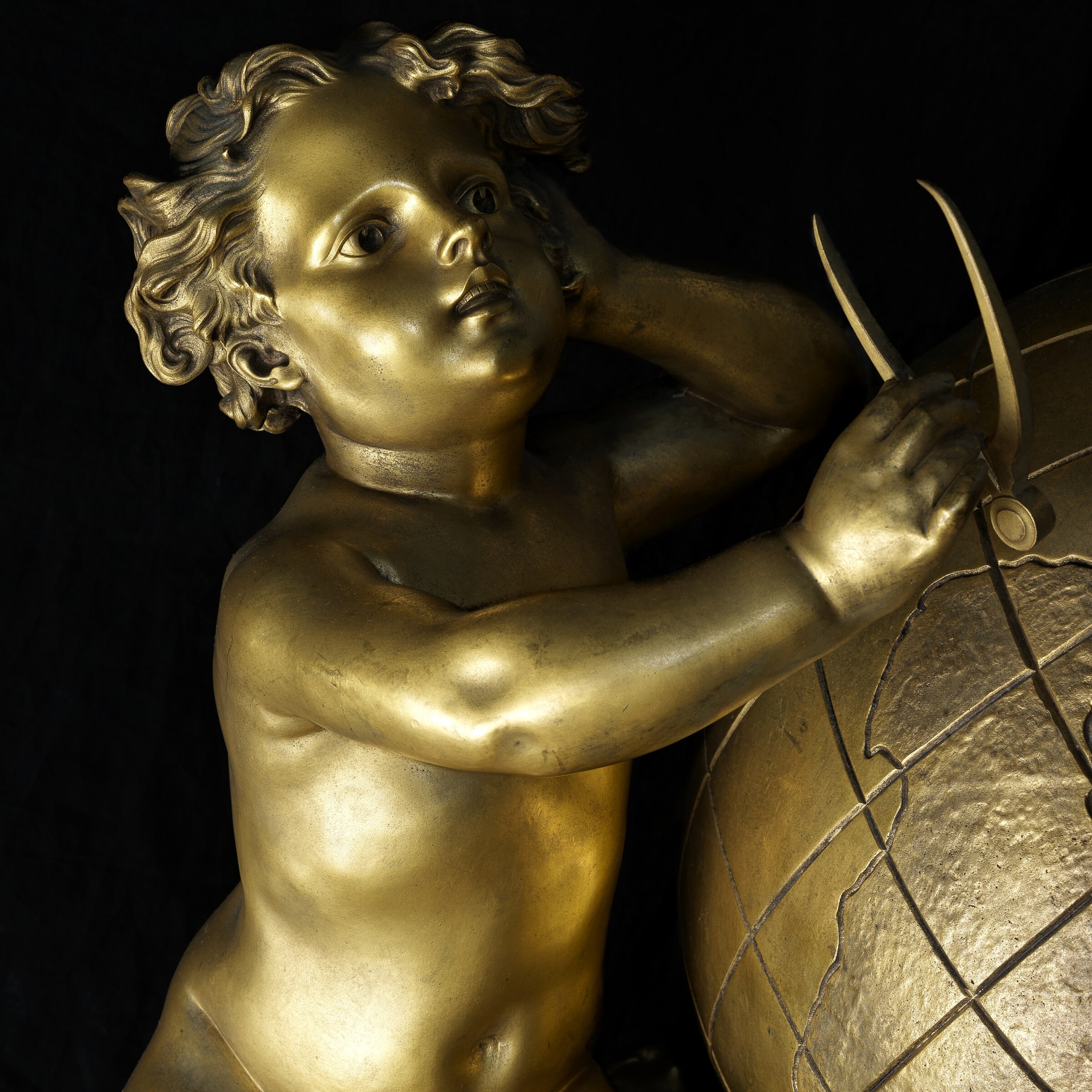

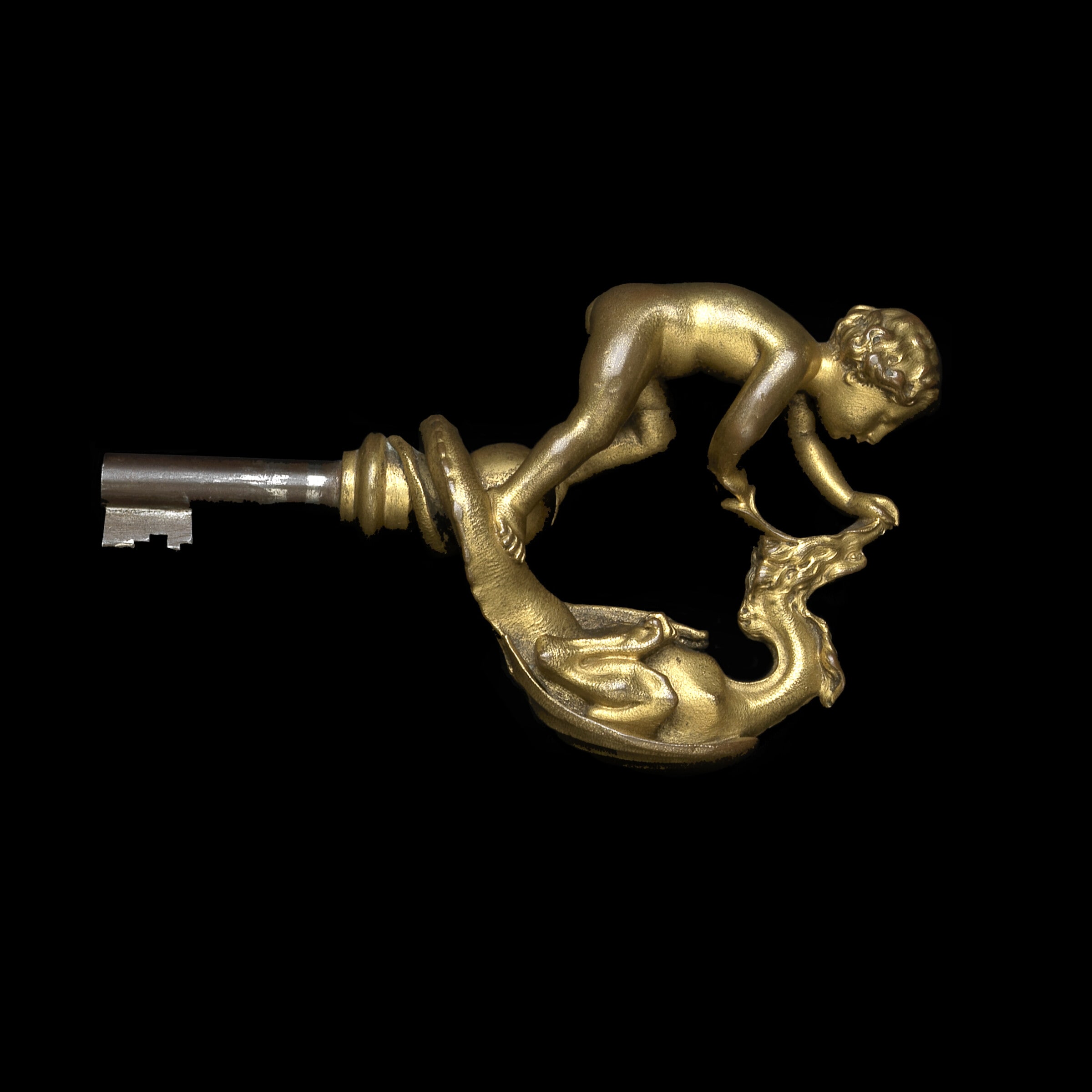

 Print
Print